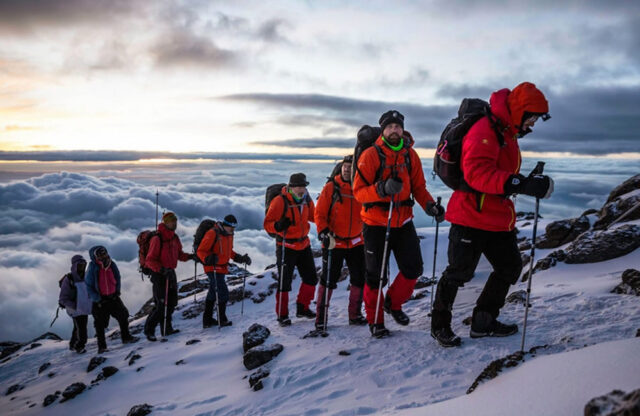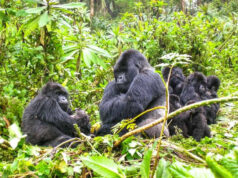Climbing Mount Kilimanjaro is a once-in-a-lifetime adventure that calls to adventurers from around the world. As Africa’s highest peak, standing at 19,341 feet (5,895 meters), it’s a challenge that requires careful planning, physical preparation, and determination. Whether you’re an experienced trekker or a first-time climber, understanding the steps involved in summiting Kilimanjaro is crucial for a successful ascent. In this step-by-step guide, we’ll walk you through everything you need to know, from reaching the base to conquering the summit.
- Preparing for Your Kilimanjaro Adventure
Before you set foot on Kilimanjaro, preparation is key to ensuring a smooth and successful climb. Preparation involves more than just packing gear; it includes physical training, route selection, and understanding the logistics of the trek.
Physical Training: Get Ready for the Challenge
Climbing Kilimanjaro requires both physical endurance and mental resilience. While no technical climbing skills are required, you’ll need to be in good physical shape to handle the strenuous hike, altitude, and rugged terrain.
- Cardio Workouts: Focus on cardiovascular exercises like hiking, running, cycling, or swimming to build stamina and endurance.
- Strength Training: Build strength in your legs, core, and upper body to carry your backpack and handle the rocky trails.
- Hiking Practice: Train on hills and uneven ground to simulate the conditions of the trek, especially if you don’t live near mountains.
Choosing the Right Route
There are several routes to choose from when climbing Kilimanjaro, each offering different scenic views, challenges, and acclimatization options. Popular routes include:
- Machame Route: Known for its scenic beauty and steep climbs. It’s a popular choice for experienced trekkers.
- Marangu Route: The only route with hut accommodations, ideal for those looking for a less rugged experience.
- Lemosho Route: Offers incredible views and excellent acclimatization opportunities. Ideal for those wanting a quieter, longer trek.
- Rongai Route: A less crowded route that approaches Kilimanjaro from the north, offering unique views and a more remote experience.
Choose a route that fits your fitness level and acclimatization needs, and make sure to allow enough time for a safe ascent.
Packing Essentials
A successful climb depends on the gear you bring. Here’s what you need:
- Clothing: Layering is key. Bring moisture-wicking base layers, a warm mid-layer (like fleece), and a waterproof, windproof outer shell.
- Footwear: Sturdy, broken-in trekking boots are a must.
- Sleeping Gear: A high-quality sleeping bag suitable for cold temperatures and a warm sleeping mat will keep you comfortable during the trek.
- Hydration and Snacks: A hydration system (like a Camelback) is essential for staying hydrated, as well as high-energy snacks like trail mix or energy bars.
- The Climb: What to Expect on the Mountain
Once you’ve arrived at the base, the real adventure begins. Climbing Kilimanjaro typically takes between 6 and 9 days, depending on your chosen route and itinerary. Here’s what you can expect day-by-day as you make your way from base to summit.
Day 1: Starting Your Journey
Your journey begins as you arrive at the park gate. Here, you’ll register, meet your guide and porters, and start your trek. The first day is relatively easy as you hike through the rain forest zone. You’ll enjoy cool temperatures, lush vegetation, and the sounds of tropical wildlife.
- Altitude Zone: Rainforest (2,000–3,000 meters)
- Trekking Time: 4-6 hours
- Accommodation: Campsite or hut
Day 2–4: The Ascent Continues
As you climb higher, you’ll experience changing landscapes, moving from the rain forest to the heath and moorland zones. These sections are marked by more exposed terrain, rocky paths, and sparse vegetation. During the Kilimanjaro hike, you will encounter some steep sections, but the slower pace will allow you to acclimatize to the altitude.
- Altitude Zone: Heath and Moorland (3,000–4,500 meters)
- Trekking Time: 5-8 hours per day
- Accommodation: Campsite or hut
Tip: These days are perfect for practicing proper hydration, pacing, and acclimatization. Make sure to rest often, especially if you feel any signs of altitude sickness, such as headache or dizziness.
Day 5: The Alpine Desert
As you reach the alpine desert zone, the landscape becomes harsher. The terrain is rocky and barren, with temperatures dropping significantly. The air is thinner, making each step a little more challenging. You’ll feel the altitude here, so it’s important to take things slow and conserve energy.
- Altitude Zone: Alpine Desert (4,500–5,200 meters)
- Trekking Time: 6-8 hours
- Accommodation: Campsite or hut
Tip: This is the critical zone for acclimatization. If you’ve been climbing slowly and following a good hydration routine, your body should adjust to the thinner air.
Day 6: The Final Push to the Summit
Summit day is the most challenging. You’ll start early in the morning, usually around midnight or 1 a.m., in order to reach the summit by sunrise. The cold will be biting, and the thin air will make every step feel harder. But the view from the top is worth every ounce of effort.
- Altitude Zone: Summit (5,200–5,895 meters)
- Trekking Time: 8-10 hours to the summit, with a descent to the next camp taking 3-4 hours
- Accommodation: Campsite or hut (depending on your route)
Tip: Bring extra layers, a headlamp, and plenty of water. The final ascent can take several hours, so be prepared for long stretches of walking.
- Summit Success: Reaching the Roof of Africa
Standing at the summit of Mount Kilimanjaro is an unforgettable experience. You’ll be rewarded with panoramic views of the surrounding landscapes and a deep sense of accomplishment. The summit, Uhuru Peak, is marked by a sign indicating you’ve reached the highest point in Africa.
Celebrating the Achievement
Reaching the summit is a triumph, but the journey doesn’t end there. After taking in the breathtaking views, you’ll begin your descent back to base camp, where you can relax, reflect, and celebrate your achievement with your fellow trekkers.
- Descent Time: 6-8 hours to descend back to your final campsite
- Altitude Zone: The descent takes you through the alpine desert, moorland, and rainforest zones once again.
Tip: The descent can be tough on your knees, so be sure to use trekking poles and wear comfortable shoes with good grip. The goal now is to descend safely and quickly to avoid altitude sickness.
The Aftermath: Reflection and Recovery
Once you’ve completed your trek, take time to reflect on the amazing journey you’ve just completed. Kilimanjaro’s diverse ecosystems, the camaraderie with your fellow trekkers, and the sheer beauty of the mountain will stay with you long after you leave.
Tip: Allow yourself a day or two to rest after your climb, and drink plenty of fluids to aid your recovery.
Conquer Kilimanjaro with Confidence
Climbing Kilimanjaro is no small feat, but with the right preparation, route selection, and mindset, you can achieve your goal. Follow these step-by-step tips for a successful climb, and you’ll be standing at the summit, ready to celebrate your success.




